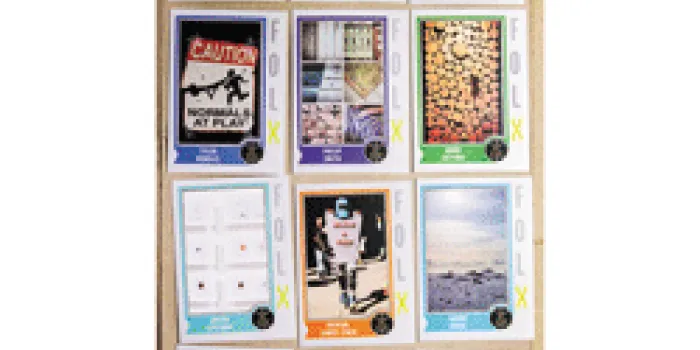In each issue of HemAware, we “Take 5” with people in the bleeding disorders community and spotlight their efforts with just five questions. Here, we talk to Justin Levesque, co-founder of FOLX, which launched the Art Stars program to highlight creative achievement in the bleeding disorders community. Levesque, 25, has severe hemophilia A with an inhibitor and lives in Portland, Maine, where he runs a design studio, Shop Geometry.
What is Art Stars?
Art Stars is a series of trading cards featuring 12 artists in the bleeding disorders community. These people represent a variety of creative arts, including photography, painting, writing and crafts. One side of the card includes the person’s name and short biography, and the other side features an example of his or her creative art form. We distributed the cards at the 2013 NHF Annual Meeting in Anaheim.
How did you get the idea for the Art Stars project?
I met Art Stars project collaborator Phil Smith at NHF’s 2012 Annual Meeting. He was heading up the Lesbian, Gay, Bisexual, Transgendered, Queer/Questioning (LGBTQ) rap session, and we talked about areas of the community where we felt people were underserved. We studied how LGBTQ and disability studies approached diverse communities, then used that framework to develop programming for people from all backgrounds within the bleeding disorders community. The collection of our programs is called FOLX, which stands for “Friends of the Letter X.” We see “X” as the variable that represents your identity. For example: women with mild hemophilia, African Americans who want to be leaders in the community, and mothers of children with hemophilia. Our message is that whatever your “X” is, we support you. Art Stars is a project of FOLX.
Why did you decide to feature creative people in the bleeding disorders community?
We felt that the bleeding disorders community defines success as physical performance. We certainly agree that people should have healthy bodies, but to hinge success on athletics doesn’t reflect reality for much of this community. There is more to a person’s well-being. FOLX wants to start a conversation about this issue using creativity.
Why do you think creative expression should be addressed?
It builds a more inclusive community. Art Stars validates people’s creative endeavors. And the act of creating something is inherently valuable. When you ask yourself why you are making a piece of work, or what you’re trying to say through the project, it creates a dialogue within yourself that is an important part of learning who you are. Art helps create personal identities and can help build confidence. Also, I believe working in this field can create sustainable careers for people with bleeding disorders. If you get hurt, you can still create.
What’s next for Art Stars?
For the 2014 Annual Meeting in Washington, DC, we’re planning a session featuring people from the community who work in creative fields and an art therapist. We’re planning an art show with a youth involvement component. We really want to provide an opportunity for everyone in the community to see what people with bleeding disorders are made of—and what we can make.
Do you know an interesting individual we should profile in a future issue of HemAware? E-mail: [email protected].

